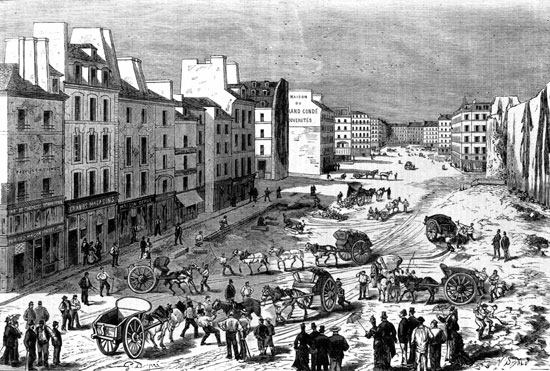Fr : version française / En: english version
Paving the way...
The huge transformation of the urban landscape in the 19th century—converting cracked byways into cambered roads with pavements alongside, building boulevards, planting lines of trees, installing sewer systems and so on—provided work for thousands of laborers including road menders, perforators, foremen and gardeners.
"Streetwalkers"
The meaning of this expression has changed significantly over time. In the Middle Ages, the French expression "être sur le trottouer" (literally, "to be on the sidewalk") meant "to be seen, to be in the foreground." In his Essays, Montaigne used "se jeter sur le trottoir" in the sense of accentuating or underscoring something.
By the late 17th century, a girl who was "sur le trottoir" was ready to marry, free of any other connotations. It was only in the 19th century, when sidewalks were actually paved, that the two initial meanings were combined to refer to prostitution.
In 1888, the public highways department under Mr. Allard employed 6,554 people under the watchful eye of 280 supervisors.



























